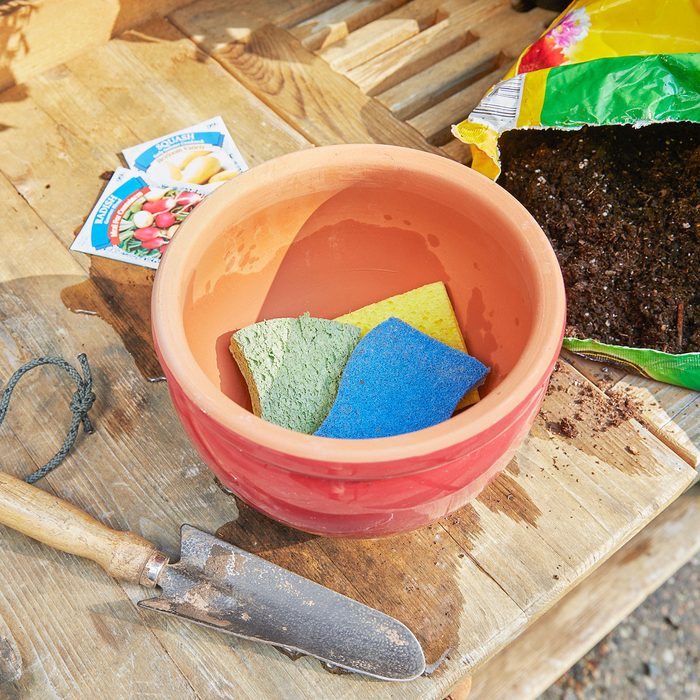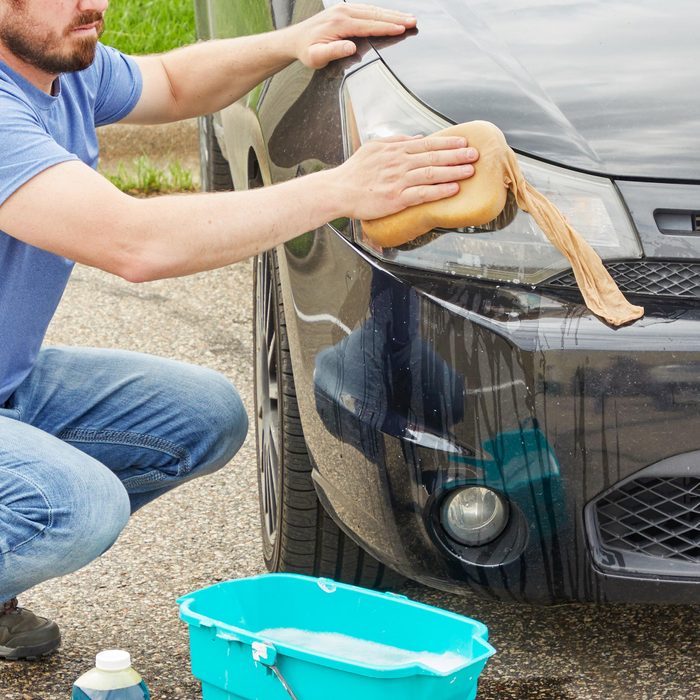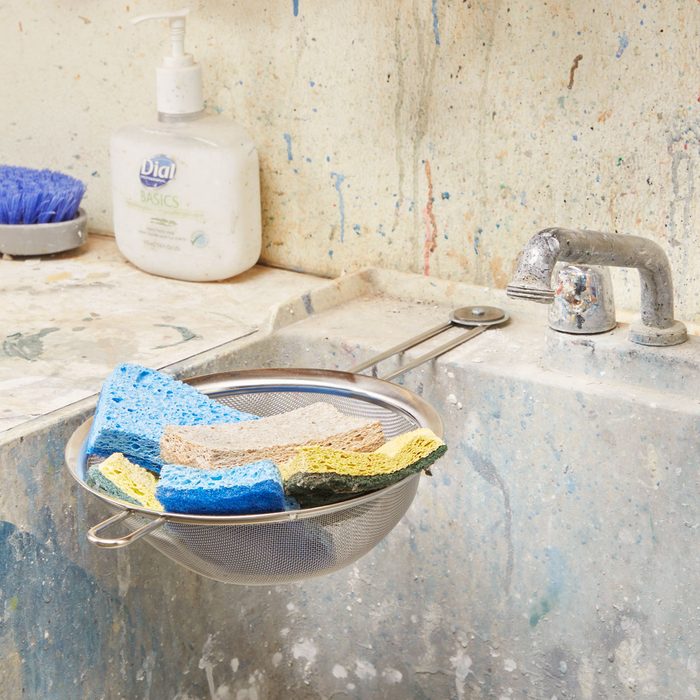Sponges can do a lot more than just wipe up messes. Here are some brilliant uses you've probably never thought to try.
9 Best Sponge Hacks

Flower Pot Filler
Water settling at the bottom of pots can lead to poor aeration and root rot. To combat this, toss a few old sponges in the bottom. The sponges retain moisture and create necessary air space. They also help prevent water from running out the bottom. Here are a few tips for cleaning the sponge.

Nylon Scrubber
I’ve heard of this trick, and while it can work in a pinch, I usually suggest using the right type of sponge for the job. There are plenty of non-scratch scrub sponges designed for tougher messes that won’t damage surfaces. That said, Jon Riding, owner of Evergreen Cleaning Company says that it’s best to use a non-scratch sponge designed for cleaning tougher messes because they won’t damage surfaces. However, he adds, “If you’re short on supplies, slipping a clean nylon stocking over a sponge can give it a little more scrubbing power without being too abrasive.”
Put your car-washing sponge inside a pair of old pantyhose for a nonabrasive, paint-friendly scrubber. The threads act like thousands of little scrapers that rub off insects and gunk with every swipe.

Noisy Drip Stopper
If a noisy drip from a downspout is driving you nuts, you can stop the drip with a sponge. Just place a kitchen sponge in the bottom of the downspout. It will muffle the dripping noise without blocking the water flow.

Sponge Ice Pack
Ice packs are a great way to keep your lunch cool, but they’re expensive to replace if you lose them. This DIY ice pack hack is reusable so it’s good for the environment as well.
First, purchase an inexpensive pack of sponges or just find some old ones around the house. Grab a big bowl of water and let the sponges soak up as much water as possible. Then put each sponge in a small sandwich bag with a zip close. Freeze the wet, bagged sponges overnight. In the morning, just toss the frozen bag into your lunch container.
These bags serve two purposes. As the ice melts, the bag holds the water so there’s no mess in your lunch bag. And it allows the melted sponge to reabsorb the water so it’s ready to refreeze for the next day.

Screen Cleaner
Fiberglass window screening becomes spotted and discolored after a few seasons in the sun. Bring your screens back to life with an automotive vinyl protectant like Armor All or Son-Of-A-Gun. Holding a large sponge behind the screen as you spray is a good way to both steady the screen and catch the spray-through. Finish by wiping the entire screen on both sides.
You can also use a sponge to clean window screens. Although he personally prefers to use a microfiber cloth to clean screens, Riding details how to use a sponge to accomplish the task: “You need to be gentle. I recommend using a soft, damp sponge with a mild soap and lightly wiping the surface. Avoid pressing too hard so you don’t stretch or damage the screen.”

Use a Sponge to Paint a Wall
A paint roller is probably the first thing you’d grab to paint a wall, but a sponge is another option. Seriously. The sponge technique is a quick, simple way to make dull interior walls dramatic.

Sponge Holder
Wet sponges always end up the ledge of the utility sink. They never dry properly and turn moldy and smelly. Here’s a solution that’s better for your laundry room. Screw a sieve to the back of the sink to hold the sponges. They dry nicely, they’re out of the way and they last forever.

Make-Do Mallet
If you need a mallet once in a blue moon but don’t own one, you can improvise with a hammer and a heavy kitchen sponge. Wet the sponge, wring as much water out of it as you can, wrap it around the head of your hammer and then secure it with a heavy rubber band.
FAQ
How long should sponges last?
Kitchen sponges should last about one to two weeks, but they should be replaced sooner if they begin to show signs of wear or bacteria growth.
What are signs it’s time to replace your sponge?
Signs that your sponge should be replaced include signs of wear, like torn pieces or scrub pads that are detaching. In addition, if your sponge begins to smell or feel slimy, these are indications of bacteria overgrowth and signs that your sponge should be replaced immediately.
How can I make my sponges last longer?
Riding says, “The key to making sponges last is keeping them clean and dry. After each use, rinse them thoroughly and squeeze out as much water as possible.” He adds, “I also recommend microwaving a damp sponge for about a minute every few days to kill bacteria.”
Another way to make your sponges last longer is to cut them in half and only use a new half after the first half needs to be replaced.
About the experts
Jon Riding is the owner of Evergreen Cleaning Company, which specializes in eco-friendly, all-natural cleaning services.




















